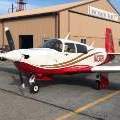How Safety Focused Are You
How Safety Oriented Are You?
53 members have voted
-
1. How meticulous are you about safety?
-
Checklist in hand, every rule is law, wx briefing every time23
-
Pretty careful but follow gut some of the time, sometimes skip things22
-
I'm careful but I do things my way,7
-
Jump in and go, it's a skycar - experience and or gadgets lead the way1
-
-
2. What kind of known risks do you take?
-
Just the risk of leaving the ground - everything else is kept to none1
-
Only fly on crystal clear no wind days well below gross weight0
-
VFR but with some margins (some wind, some clouds, not perfect vis)12
-
Marginal VFR, good wind, max weight4
-
Easy IFR - like climbing/descending through a layer but no need for instrument approach4
-
IFR to personal minimums23
-
Hard single pilot IFR to minimums9
-
I push things a little on occassion when I need to0
-
I like to play russian roulette with my airplane (thunderstorms, icing, overweight, etc)0
-


Recommended Posts
Join the conversation
You can post now and register later. If you have an account, sign in now to post with your account.